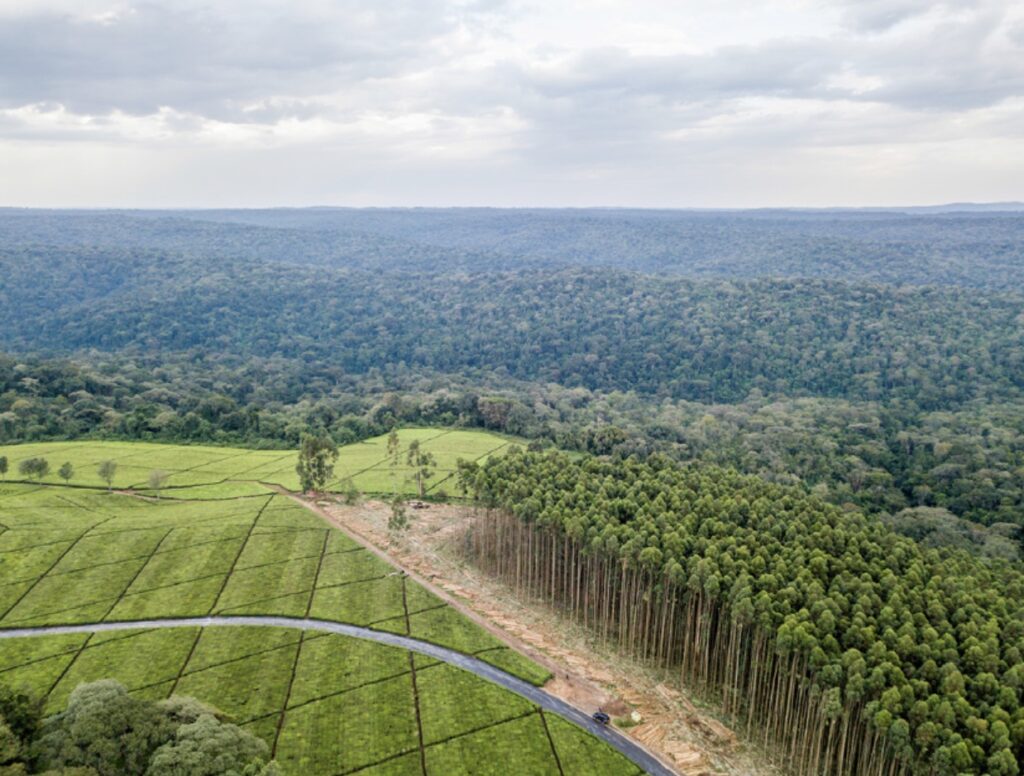Investor activity, and financial flows to nature and climate did not signal a positive year for natural capital in 2023
2023 was a bit of a disappointment for natural capital investments into forests. Not to take away from few industry wins (such as Mirova’s recently launched LDN Fund successor, MSLF2) but on the whole, investment professionals working in forest and land use were expecting more from the year. As forest investments are more and more being linked to natural climate solutions – harmful media from various articles was one of the causes for pause in getting new initiatives off the ground in 2023, but there were more.
In this first article of 2024, I collect some interesting takeaways from the past year via relevant articles and publications that may shed some light on what is needed this year for growth in forest investment.

Four Trends Shaping Sustainable Finance’s Future in 2024 – Corporate Knights
In the above named article, published on January 3rd, think tank and media company Corporate Knights reviews some disappointing statistics regarding sustainable finance from 2023. Though the article mostly points to the energy transition (or lack thereof), there are important parallels to be drawn for forest finance.
The article relays statistics from InfluenceMap, where 13,000 equity funds were analyzed – indicating that progress on the climate transition has worsened, with the percentage of managers practising effective climate stewardship shrinking from 33% in 2021 to 18% in 2022. Corporate Knights goes further in describing how even ESG-labelled funds in Europe increased their oil and gas exposure and that Article 8 funds had about 2.3% of their holdings in fossil fuel assets in Q3 2023, up from 1.4% in early 2021. Pension funds are called out for downplaying potentially catastrophic climate risks to their portfolios, putting future payouts in jeopardy.
The think tank surmises that this will result in growing pressure from governments and NGOs on banks, asset managers, fund companies and pensions to up their game in climate smart investing.
My take on this is that as investors look for ways to respond, they will not only be looking for renewable energy investment opportunities as alternatives to fossil fuels, but a diversified climate change adaptation and mitigation portfolio that can hit several birds with one stone (apologies for the tasteless pun). As nature emerges on the global agenda, and food security gains a front row seat at the COP 28 discussions (Reuters, 2023), investments into improved land management – where there is a clear investment case and case for climate, environment and social benefits will be the go-to solutions. Sustainable forestry is a clear opportunity for this.
UNEP’s State of Finance for Nature
In their 2023 annual report, UNEP looked at both nature-negative and nature-positive finance flows. On the negative side, they report that every year, USD 7 trillion flows directly into negative impacts on nature – with USD 5 trillion of this coming from private finance (140 times larger than private investments into nature-based solutions). They flag that environmentally harmful subsidies have increased 55% since the previous year’s report, which will have an impact on both public and private financial flows.
Current funding to nature-based solutions is reported at USD 200 billion (an 11% increase since the previous report), with 82% of this coming from governments.
Like the previous report – UNEP highlights the nature investment opportunity, where relevant to forestry, they indicate that investments into sustainable land management have the capacity to increase fourfold by 2050 based on long-term profitability of sustainable food and commodities (think timber).
My synopsis – Unfortunately, opportunity does not translate into action, or as someone said to me today – believe what people do, not what they say. It will take the stakeholder pressure forecasted by Reuters and a swing in subsidies – that favour more nature positive financial flows, to have a mass market shift in private finance towards nature (and climate) friendly investments. Though the frontrunners in sustainable investment, like Natixis, Schroders and BNP Asset Management (InfluenceMap, 2023) set a good example for the financial industry, they are unfortunately not the norm.
State of the Voluntary Carbon Markets 2023 – Ecosystem Marketplace
In it’s most recent State of the Voluntary Carbon Markets report, Ecosystem Marketplace (EM) observes strong signals of depressed market conditions for carbon sales over the first ten months of 2023. That said, credit prices have seen increases where credits are derived from high-quality projects. EM highlights that the co-benefit aspect of quality, where projects have at least one environmental or social co-benefit is the reason for value increase. It is observed over the reporting period that co-benefit certification has resulted in a 78% price premium compared to projects without co-benefit certification. Further adding to the credit value appears to be those connected to nature-based solutions. Forestry and Land Use and Agriculture projects made up almost half of the market share at 46% over the reporting period, with Forestry and Land Use credit prices experiencing a 75% increase over the period.
Though 2023 was a flat year for new project registrations (see Figure 3), I don’t think this was due to a lack of demand, but more a bottleneck in the over-burdened certification system. With ‘quality’ in the VCM becoming more objective, thanks to the finalization and uptake of the Integrity Council on Voluntary Carbon Markets’ (ICVCM) core carbon principles in 2023, and the upswing of methodology updates favouring more rigorous scientific approaches by several certification bodies – credit buyers will be gaining confidence, and carbon credits will continue to function as one of the commodities of sustainable land management that UNEP refers to. With buyers’ preferences shifting towards deeper involvement in carbon projects to ensure their institution’s own quality criteria are upheld – this is a perfect opportunity to bring buyers in as direct investors into forestry assets that will derive carbon credits.
Incentives, Nature, and Climate in the Push for more Financial Flows to Forests
Unfortunately, I probably could have written this same article this time last year. The few trail blazer investors in sustainable finance and nature-based solutions continue to act, but few new players are joining the roster. As mentioned above, it will take strong pressure from key stakeholders, and a stronger message via climate/nature positive subsidies or disincentives for unsustainable investments to spark investor action at scale (it seems SFDR, and other regulatory requirements are not doing the trick). I do believe we will see some of the more progressive governments working on significant incentive structures for the green transition, where investing into forests in various forms will be a more prevalent solution.
A positive unchanging theme from this time last year is my continued mission to mobilize more private investment into forestry, especially in tropical jurisdictions where co-benefits are plentiful, and the need for sustainable forest management and wood fibre are in high demand. Government subsidies are not something that most of us have control over – but we do have control over an unmentioned piece to this puzzle – and that is greater awareness and education on the forest investment class. So, you can expect to hear more from me this year on my focus of bringing more and new forest investment to investor’s portfolios. If you are an investment professional and are curious how we could collaborate on this mission, please reach out and let’s make 2024 the year for forest finance.
Did you like this article? Sign up now for the ForestLink’s newsletter, where you’ll receive technical advice, reflections, and best-practice guidance to support you with your forest-linked investment strategy or business straight to your inbox.





